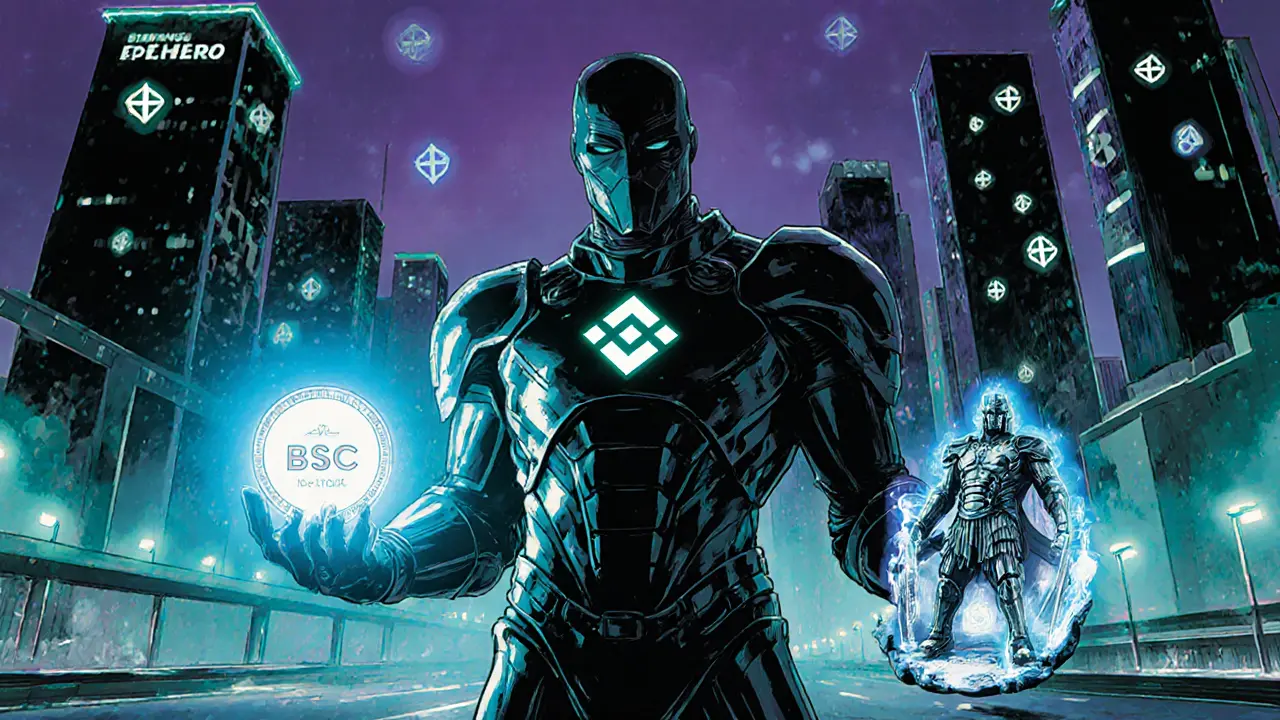BNB Reflection – What It Is and Why It Matters
When working with BNB reflection, a tokenomics feature that automatically distributes a portion of transaction fees to holders. Also known as reflection rewards, it lets investors earn passive income simply by holding the token.
Another key player is Binance Coin (BNB), the native utility token of the Binance ecosystem. BNB powers the Binance Smart Chain (BSC), a high‑throughput, low‑fee blockchain that hosts many reflection‑enabled projects. Together, BNB, BSC, and reflection mechanisms create a feedback loop where activity on the chain fuels holder rewards.
BNB reflection has grown popular because it aligns incentives: the more you hold, the more you earn, without staking or locking funds. This model also encourages liquidity, as traders know they'll receive a slice of every swap. In practice, a 2% fee on each trade might be split—1% burned, 0.5% added to liquidity, and 0.5% sent to all BNB reflection holders. The constant flow of small payouts adds up over time, especially during high‑volume periods.
How Reflection Works on Binance Smart Chain
Reflection relies on a smart contract that tracks each address's share of the total supply. When a transaction occurs, the contract calculates the fee portion destined for holders and updates each balance proportionally. Because the contract runs on BSC, the process is cheap and fast, keeping gas costs low for users. This efficiency is why many new tokens launch on BSC first, aiming to attract investors with built‑in reward structures.
Two important attributes define any reflection token: the fee rate and the distribution method. A higher fee can boost rewards but may deter traders, while a lower fee keeps the market fluid but yields smaller payouts. Projects often tweak these values based on community feedback and market conditions, a practice that highlights the dynamic nature of tokenomics.
Beyond basic payouts, some projects integrate additional features like auto‑liquidity generation or token burns. These actions help sustain price stability and reduce supply, which can amplify the value of each reflection token over time. For example, a token might burn 0.3% of each trade, effectively increasing each holder's percentage of the remaining supply.
Understanding the relationship between BNB reflection and broader crypto trends is essential. When Binance announces upgrades to BSC, transaction speeds improve, directly boosting the frequency of reflection payouts. Likewise, market spikes in BNB price raise the dollar value of each reflected token, even if the token amount stays constant.
For investors, the key takeaway is that reflection rewards are passive but not risk‑free. Market volatility can erode the underlying token’s price, offsetting the benefit of regular payouts. Therefore, many users combine reflection tokens with traditional staking or yield farming to diversify their income streams.
Finally, the community aspect cannot be ignored. Projects that openly share their reflection formulas and fee structures earn trust faster, leading to larger holder bases. Transparency also lets users calculate expected returns using simple spreadsheets—no fancy tools required.
Below you’ll find a curated list of articles that break down specific reflection projects, compare fee structures, and show real‑world examples of how BNB reflection behaves during bull and bear markets. Dive in to see which strategies match your goals and how you can make the most of passive crypto earnings.

